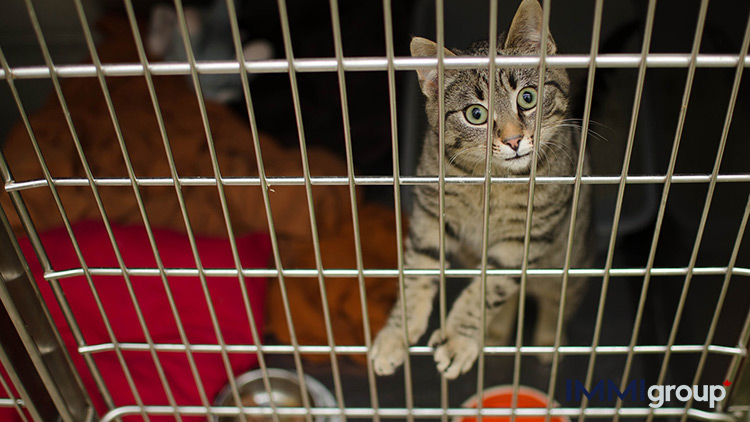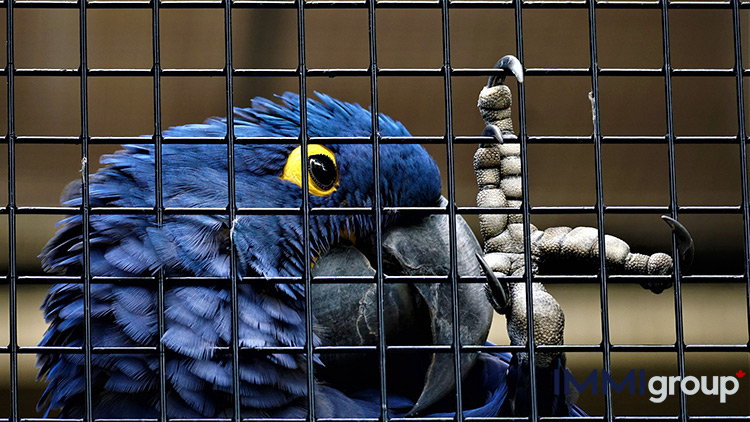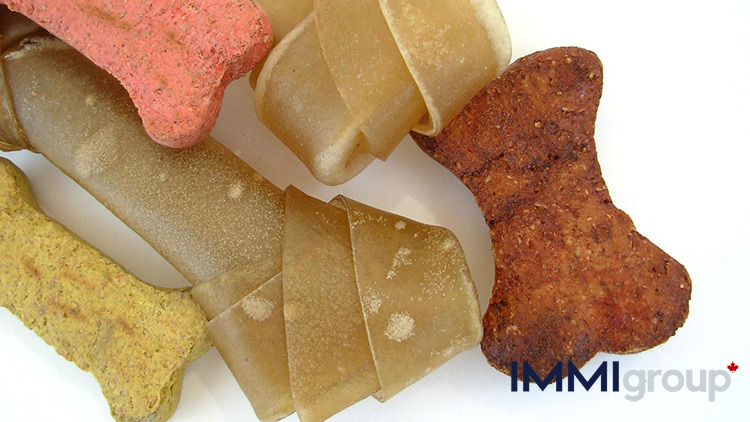Your Guide to Crossing the Border with Your Pet

How to bring your pet through the US Canada border without issue
If you’ve consulted our guides to crossing the border to shop for alcohol, tobacco, or anything else, you’re a total pro at saving time and money when you travel from Canada to the US (or vice versa). We haven’t covered crossing with furry friends yet, though. Before you plan your jaunt down south with the creature that your heart desires, keep the following things in mind.
Get Your Papers
Crossing into the United States from Canada with a pet requires that you provide proof of vaccination. You have given your cat or dog rabies shots, right? As little as a signed letter or receipt from a vet that states your animal is in good health and been vaccinated will suffice for this purpose, but the vaccination must have taken place at least thirty days before you cross. Most people have little hassle bringing their pet with them when they travel. An official at a popular border crossing who agreed to speak on condition of anonymity says that pets are the least of border guards’ worries: “no, no, no, no one’s too worried about dogs and cats here. You really just need the vaccination receipt.” This holds for the continental US: Hawaii is rabies-free, so you’ll need to quarantine your dog for 130 days if you’re going there.
To come back into Canada from the US, or for Americans visiting Canada with the family dog, the same rules obtain. In spite of what you may have heard (or what your vet may have tried to sell you), you do not need a tracking tattoo or microchip to travel between Canada and the US with a domestic animal.
Please note: The below information concerns common pets, not “exotic” animals. For exotic animals – any species that is protected – there are many additional requirements. To learn more about travelling with an exotic animal, please look into CITES certificates.
Birds
The rules governing birds are slightly more restrictive. You have to have been in possession of the birds for at least 90 days before your border-crossing, and the birds must not have had any bird-on-bird contact during that time. You also must declare that the birds are your pets and that you aren’t planning to sell them, and you can only bring pet birds into Canada once every 90 days.
Birds entering the United States from Canada by land need only an inspection by a vet at your point of entry. If you’re traveling by air or sea you’ll also need a import permit VS 17-129. Birds entering the US from any other country are subject to thirty-day quarantine, similar to the one imposed on entering Hawaii with dogs or cats (the quarantine facilities are in New York, Miami, and Los Angeles).
Horses
Horses can cross the US-Canada border with an equine-specific veterinary examination certification. The form includes a delightful set of illustrations with sections for special muzzle characteristics, and a certificate proving a negative result on a Coggins disorder test. Vet inspection is required on entering the US, so check your local border crossing for hours and availability.
Rodents
Pet rodents have not been regulated for border-crossing, so feel free to toss the cage and hamster-wheel in the back seat to distract your kids on the long drive to your grandmother’s house in Boise. Our source at the border says “we don’t really see a lot of rats,” so it might be worth doing your research and printing the relevant pages from the government’s website to ease your guard’s rule-book thumbing.
Pet Food
If you absolutely must bring pet food with you across the border, it must be in its original packaging, be under 20kg, have a label with a clear list of ingredients and place of origin. Certain animal by-products won’t be allowed into the US, including pet foods that contain any sheep or goat meat.
Buying a Pet in the US to Bring Back to Canada
This is a pretty common practice, especially for pure bred dogs or weird-looking lizards. The regulations are pretty much the same, save the $35 inspection / importation fee ($55 if there’s a problem with your documents) and a detailed veterinary certificate, which must:
- “be in English or French;
- be issued and signed by a licensed veterinarian;
- identify the animal (as in breed, colour, and weight);
- state that the animal has been in the exporting country since birth or for at least six (6) months immediately preceding shipment to Canada; and
- be accompanied by documentation from a competent government authority, stating that rabies has not occurred in the country of origin for at least six (6) months immediately preceding the animal’s shipment to Canada.
A competent government authority refers to a veterinary agency or other government agency that manages a country’s animal health and welfare situation, as well as handles the responsibility of veterinary certification for the purposes of international trade. The document can be either:
- a letter issued on the competent government authority’s letterhead, which must be dated, stamped and signed by an official of the competent government authority in the country of origin; or
- a letter by the licensed veterinarian who issued the certificate, which must be endorsed by the competent government authority.”
So make sure you have all the necessary documentation and have a fun trip with your pet(s).



